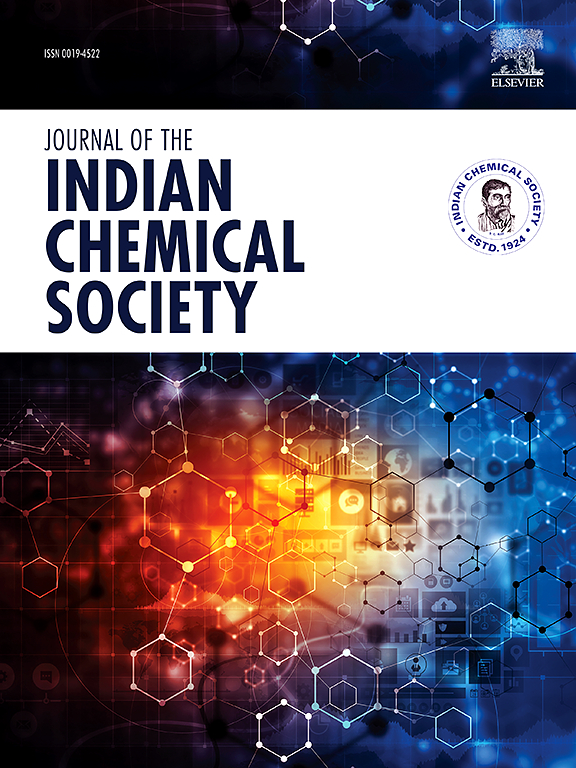Growth aspects and microscopic analyses of Pd-catalyzed InAs nanowires on the B-face of InAs (111) substrate by solid source molecular beam epitaxial method
IF 3.2
4区 化学
Q2 CHEMISTRY, MULTIDISCIPLINARY
引用次数: 0
Abstract
InAs nanowires were grown on InAs (111) substrates using Pd as a catalyst. The growth was done using solid source molecular beam epitaxy. Zinc-blende InAs nanowires with zero defects have been successfully grown along the <110> directions. This study explores the structural features of synthesized nanowires using microscopic methods. The study used various deposition parameters, including catalyst particle density, growth temperature, and the V/III precursor ratio, to examine how these factors affect the growth of nanowires. All the parameters for the growth of nanostructure significantly influence on the grown nanowires. It is found to be 15 Å thick palladium film provides the favourable catalyst particle size. Temperature-dependent growth studies exhibited the reasonable density of nanowires with orientation along <110> plane for nanowires obtained at 375 °C. The varying amounts of input precursors show that both fluxes significantly influence the growth rate and density of the collected nanowires. Less tapered nanowires are produced under low supersaturation conditions, while a high In-flux promotes axial growth, leading to increased tapering of the nanowires. The morphology of the harvested nanowires was examined using a Scanning Electron Microscope (SEM). Additionally, Transmission Electron Microscope (TEM) analysis verified that the grown nanowires have a zinc blende structure, and no catalyst signature was detected. It was also observed that the tips of these nanowires showed a nearly even distribution, containing about a 50:50 ratio of palladium and indium in their chemical makeup. The high-angle annular dark field image and the intensity profile indicate that the Zinc-blende nanowires possess outstanding defect-free characteristics, which makes them highly appropriate for spintronics applications.
固体源分子束外延法在InAs(111)衬底b面制备钯催化的InAs纳米线及其微观分析
以钯为催化剂,在InAs(111)衬底上生长了InAs纳米线。采用固体源分子束外延技术进行生长。零缺陷锌掺杂InAs纳米线已成功地沿着<;110>;的方向。本研究利用显微方法探讨了合成纳米线的结构特征。该研究使用不同的沉积参数,包括催化剂颗粒密度、生长温度和V/III前驱体比,来研究这些因素如何影响纳米线的生长。纳米结构的生长参数对纳米线的生长有显著影响。发现15 Å厚的钯膜提供了有利的催化剂粒径。温度依赖性生长研究表明沿<;110>;取向的纳米线密度合理。在375°C下获得的纳米线平面。输入前驱体的不同量表明,这两种通量都显著影响所收集的纳米线的生长速度和密度。低过饱和条件下产生的纳米线锥度较小,而高通量促进轴向生长,导致纳米线锥度增加。利用扫描电子显微镜(SEM)观察所得纳米线的形貌。此外,透射电镜(TEM)分析证实了生长的纳米线具有锌闪锌矿结构,并且没有检测到催化剂的特征。还观察到,这些纳米线的尖端显示出几乎均匀的分布,在它们的化学组成中,钯和铟的比例约为50:50。高角度环形暗场图像和强度分布表明,锌-闪锌矿纳米线具有良好的无缺陷特性,非常适合自旋电子学应用。
本文章由计算机程序翻译,如有差异,请以英文原文为准。
求助全文
约1分钟内获得全文
求助全文
来源期刊
CiteScore
3.50
自引率
7.70%
发文量
492
审稿时长
3-8 weeks
期刊介绍:
The Journal of the Indian Chemical Society publishes original, fundamental, theorical, experimental research work of highest quality in all areas of chemistry, biochemistry, medicinal chemistry, electrochemistry, agrochemistry, chemical engineering and technology, food chemistry, environmental chemistry, etc.

 求助内容:
求助内容: 应助结果提醒方式:
应助结果提醒方式:


